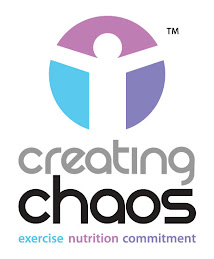How well do you know your clients?
Being a successful personal trainer requires a lot of things including good knowledge, confidence, expert skill set, the ability to improvise and constantly being flexible. However, perhaps the most important tool having longevity with your clients and the ability to develop and maintain rapport, sometimes referred to as the softer skills.
There’s one thing for certain, not all personality types get on and that needs bearing in mind. If your instincts tell you that the connection isn’t quite there then they’re most probably right. Rapport is something you can work on but if there is nothing to build on in the first instance, it could prove quite a painful journey.
So, how can you improve rapport? Here’s some steps to help you make significant steps towards improving rapport with clients:
- Take an interest in them and their life - Yes, clients will generally pay an interest in you but it’s your job to take more of an interest in their life. A challenge as a personal trainer is to brush off the stereotype of being self obsessed and voyeuristic. Being more interested in your own reflection isn’t going to help this. The medical screening should be not even scratching the surface of how much you want to know about your clients.
- Step into their world - Learn how your client paints a picture of the world and become more in tune with it. Understanding your client’s perception will help you understand them better, show empathy and be able to set more appropriate targets and focus to their programme. Learning your client’s values will help you understand what is important to them and picking up on the type of predicates they use will help. Predicates are descriptive words that give you clues as to how someone sees things. For example, “I see what you’re saying” is a common statement but indicative of a more visual frame of mind. Most of us use a variety of frames frequently but over time, you can build up a picture of the most common frames your clients use. The key then is to speak back to them with the same type of language / terminology. This doesn’t mean you should converse parrot-fashion, more favour their type of language with how you speak. This will make more sense to them and help develop rapport.
- Regular assessments and time to reflect - We’ve all been guilty of thinking that every second spent with clients should involve them sweating and us dictating, but is this really an ideal situation. Irrespective of how busy your clients are, you need to make time to reflect, review and take stock of progress. I believe it’s an honest mistake as the urge stems from wanting to give clients as much as possible within the time spent together. However, it’s a little like driving at night without the lights on - rather dangerous and you’re not too sure where you’re heading. Always take time out for this. A lot can be done remotely but it’s a crucial part of the process and will constantly keep you in touch.
- Master of nothing - Avoid falling into the trap of thinking that you need to know everything as the trainer. Be confident with your areas of expertise but also know your boundaries and always sign post clients to the best resource(s) where possible. If a GP told you to see a foot specialist, you wouldn’t insult him/her for not being able to solve it themself. Trying to be everything is tiring, unnecessary and it’s potentially a legal suit waiting to happen.
- Make your clients feel special - You’re the best placed person to decide how this might be but everyone likes to feel the receiving end of being treated well. It could be a birthday card/gift, it could be giving them a bottle of water at the start of a session, it could be greeting them showing how delighted you are to see them. Meeting them as you would a friend doesn’t take much effort but will fill your client with a sense of comfort, relax them and make them feel as though they belong in your company.
Please add your own tips and thoughts on what works well to develop rapport with clients



